I need to connect two circuits that use different PSU voltages. The first is a microcontroller clock generator, it outputs a clock 0V to 3.3V at 150KHz as maximum freq. I need to connect this clock to a CD4047 (pin.3) on the second circuit. But the second circuit uses negative supply voltage and I cannot change that. So the CD4047 is powered with -15V and 0V. Obviously it won't accept my clock as is. I think I need a level shifter that converts the positive level of the clock to -15V or lower (I don't mind about the phase of the clock).
I tried the circuit shown in Figure 2 here: https://www.maximintegrated.com/en/app-notes/index.mvp/id/4414 I used a LM393 instead of the comparator used in that schematic, and powered it with 0V on pin 8 and -15V on pin 4 But it didn't work, maybe I got something wrong
Do you have any example tha I could use, or a different approach to do this task? Thank you
